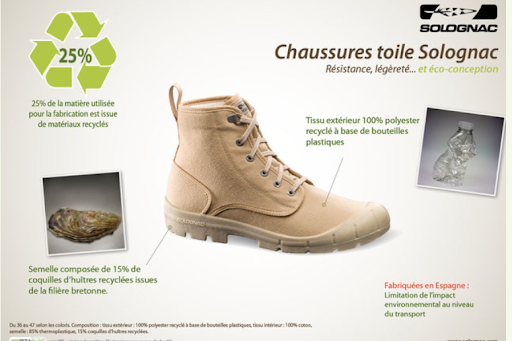Eco-design: what are we talking about here?
Let’s go back to the basics. Eco-design is an approach that aims to reduce the environmental impact of a product over the course of its entire life cycle, while also retaining its performance and durability. You’ll know that, for Solognac, durability is the priority in order to allow you to make the most of your hunting sessions in complete safety. To do this, there are several possible approaches. Firstly, by changing our raw materials. Then, we can also switch to manufacturing processes that have less impact on the planet: using less water in the dyeing process by dope-dyeing the thread or by only dyeing every other thread.










